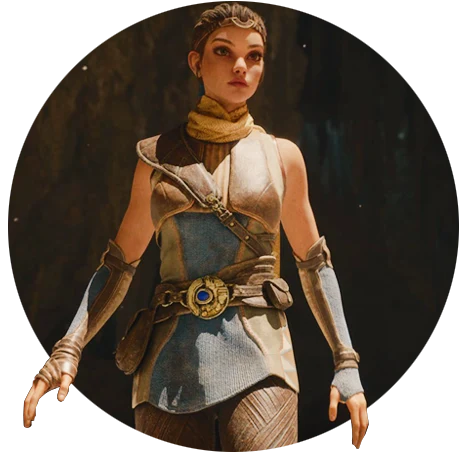THE VFX PIPELINE
Take your career to the next level by learning from DNEG's CG Supervisor
Join our “Unreal Engine for Short Movies” Master and build the strong foundation you need to understand the new production challenges and start your career in a triple-A feature animation company.
Through this journey, you will develop specific analytical, methodological, and practical skills to master an actual studio workflow.
The goal is to produce a short movie using UNREAL ENGINE and other DCCs.
You’ll dive into the pipeline that brings you from visualizing and creating the concept idea, to a full CG render with the latest solutions offered by UNREAL ENGINE.
During the last part of the course, the students will be involved in the creation of a final project ready to be showcased in their portfolio.
The 1-year Master “Unreal Engine for Short Movies” can be split into two paths:
“3D Animation- The fundamental Bootcamp” for beginners with a basic knowledge of CG software
and
“Unreal Engine-The advanced Bootcamp” for intermediates who are already familiar with the fundamentals of CG and Maya user interface.
Based on interest or skills, it is possible to enroll for the entire one-year course or the two 6-month Bootcamps separately.

PIPELINE ROLES
A 3D Animator creates moving images using digital models via CGI software. They may be asked to create animation and special effects for movies, television, video games, advertisements, etc.
Animators are story-driven, they bring all the digital elements and characters to life.
Which skills should a 3D Animator have?
The role of the 3D Animator requires strong technical knowledge along with a highly creative sensibility.They need to know how to identify key scenes and sequences, transform storyboards into animated sequences, and animate characters, creatures, props, vehicles, weapons, objects, etc.
The software used for 3D animation is highly specialized:
– Maya
– 3D Studio Max
– Java
– Adobe Photoshop and After Effects
– MotionBuilder
– Mudbox
– Premier
– Cinema 4D
– LightWave
The more familiar they are with platforms, the greater their value as professionals.
Soft skills required
– excellent communication skills
– the ability to work under pressure and deliver to tight deadlines
– being able to work in a team
Salary
The national average salary for a 3D Animator is $67,989 in the United States. Instead, the average salary is £33,508 in the United Kingdom.
A 3D Lighting artist adds tone, depth, mood, and realism to scenes and characters by adding color and shadows, illuminating, and adjusting the placement of these objects. They are specialized in lighting the final scene (or render) in a style that must blend seamlessly with the 3D project. A 3D Lighting artist applies different lighting effects depending on different factors, such as the weather or the time of day, and makes it clear where light sources should be in a scene.
Which skills a 3D Lighting artist should have?
They need to have a very good eye for color, tone, atmosphere, and composition, because understanding how light reflects on objects in nature determines how we perceive them.
Among the main software to be able to handle well are Maya, Arnold, Houdini, and Mantra.
Soft skills required
– good communication skills to be able to work well in a team
– the ability to troubleshoot and solve problems independently
Salary
The average annual pay for a Lighting artist in the US is about $59,535 to $68,250. The average salary for a Lighting Artist is £32,838 per year in the United Kingdom
The Layout artist uses storyboards as a reference to create camera angles for a scene and with the help of editing, that scene is then broken down into shots. Then, Animators, Lighters, and Compositors work on those shots through the cameras set by the Layout artist.
A layout artist creates fully-rendered black and white versions of the final backgrounds taken from storyboards for each shot of the animation. He designs the framing, camera paths, angles, depth, scale, perspective, and lighting for an animated sequence, working with directors to translate storyboards into action sequences.
In traditional 2D animation, layout artists define perspective by drawing backgrounds. The size of the objects drawn in the background, relative to the action in the foreground, affects how viewers perceive the scene.
Which skills should a Layout artist have?
If you want to become a successful Layout artist, you should have some good technical skills like:
– be able to draw and have a basic understanding of anatomy
– have experience with photography, understand camera and lighting techniques
You must have a sense of perspective and proportions and the ability to make backgrounds, objects, and characters that work together in scale, to create a believable world.
It’s also necessary to have good knowledge of programs such as Adobe Photoshop and After Effects, Maya, Nuke, RenderMan, 3D Studio Max, Final Cut, Blender, TV Paint, and Mental Ray.
Soft skills required
– be a good communicator
– have a passion for the medium of animation and filmmaking
Salary
The national average salary for the Layout artist profession is $61,496 in the United States of America. Instead, the national average Layout artist’s annual salary in the United Kingdom is £ 33,442.